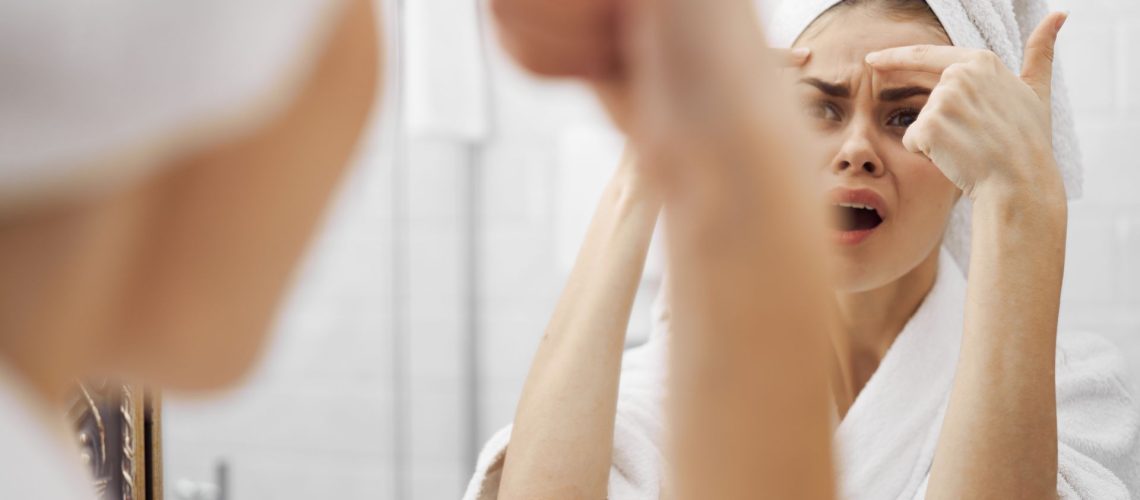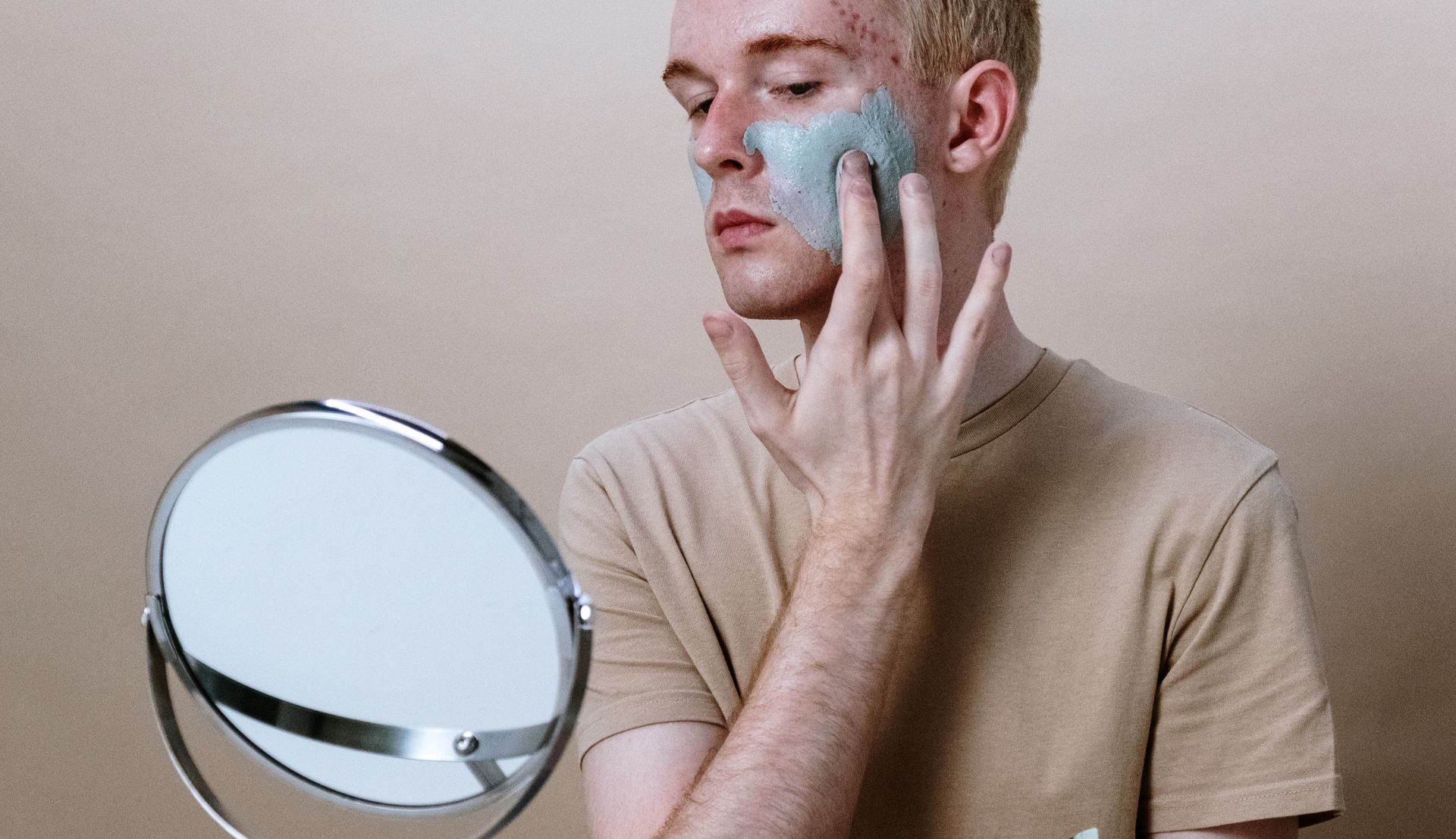Acne is a common skin condition that can affect people of all ages, and its presence on different parts of the face can provide valuable insights into its causes and potential treatments. In this weblog, we’ll explore the Mapping Out Acne, various areas of the face where acne tends to appear, and discuss effective strategies for managing and preventing breakouts.
Read More: How to Get Rid of Bags Under Eyes
- Forehead Acne: The forehead is a common area for acne due to factors such as excess oil production, hair products, and friction from hats or headbands. Incorporating a consistent skincare routine with gentle cleansers and non-comedogenic moisturizers can help manage forehead acne. Additionally, being mindful of haircare products and avoiding wearing tight headwear can contribute to clearer skin.
- Cheek Acne: Acne on the cheeks may be linked to factors like dirty cell phones, excessive touching, or the transfer of bacteria from hands to the face. Regularly cleaning phones and practicing good hand hygiene can help prevent breakouts on the cheeks. Consider incorporating products with ingredients like salicylic acid or benzoyl peroxide into your skincare routine to target acne in this area.
- Nose Acne (T-Zone): The T-zone, including the nose, is often prone to acne due to increased oil production. Proper cleansing and the use of products containing ingredients like niacinamide or salicylic acid can help control oil and prevent clogged pores. Avoiding touching or picking at the nose area is essential to minimize the risk of irritation and further breakouts.

Overall Skincare Habits - Chin and Jawline Acne: Hormonal fluctuations, especially in females, can lead to acne along the chin and jawline. Birth control, lifestyle changes, and targeted skincare products may help manage hormonal acne. Additionally, maintaining a balanced diet and managing stress levels can contribute to clearer skin in this area.
- Temples and Hairline Acne: Similar to forehead acne, breakouts along the temples and hairline can be influenced by hair products, sweat, and friction. Choosing hair products labeled as non-comedogenic, keeping the hair clean, and avoiding tight hairstyles can be beneficial in preventing acne in these areas.
- Under-Eye Area: Acne around the eyes may be related to the use of heavy eye creams or makeup. Opt for non-comedogenic products, and make sure to remove makeup gently to prevent irritation. Adequate sleep and hydration can also contribute to healthier skin in this delicate area.
7. Lip Area Acne:
The lip area is sensitive and can be prone to acne caused by factors like toothpaste ingredients or lip products. Opt for toothpaste without sodium lauryl sulfate, a common irritant, and choose lip products labeled as non-comedogenic. Keeping the lip area clean and avoiding excessive licking can also contribute to preventing breakouts.
8. Ears and Behind the Ears Acne: Acne in and around the ears can result from factors like hair products, sweat, or the accumulation of dead skin cells. Gently cleanse the ears and the surrounding areas, and be cautious with hair products to prevent them from coming into contact with this region. Regular exfoliation can help remove dead skin cells that may contribute to clogged pores.
9. Neck and Jawline Acne: Acne along the neck and jawline is often associated with hormonal imbalances, stress, or friction from clothing. Incorporating stress management techniques, such as meditation or yoga, can positively impact hormonal fluctuations. Wearing loose-fitting clothing and keeping the area clean can help prevent irritation and breakouts.
10. Between Eyebrows (Glabella) Acne: Acne between the eyebrows may be linked to factors like dirty glasses, excessive makeup, or a diet high in processed foods. Regularly clean glasses and sunglasses, choose non-comedogenic makeup products and consider incorporating more whole foods into your diet to support skin health.
Overall Skincare Habits :
- Exfoliation: Regular exfoliation can help remove dead skin cells, preventing clogged pores and promoting skin renewal. However, be gentle to avoid irritation.
- Hygiene Practices: Wash your face twice daily, and after sweating, to remove excess oil and prevent pores from becoming clogged.
- Non-Comedogenic Products: Choose skincare and makeup products labeled as non-comedogenic to reduce the risk of pore blockages.
12. Advanced Treatment Options:
For persistent or severe acne, consider advanced treatment options such as:
- Prescription Medications: Dermatologists may prescribe topical or oral medications to target specific aspects of acne, such as inflammation or bacteria.
- Professional Procedures: Treatments like chemical peels, microdermabrasion, or laser therapy can address acne and improve overall skin texture.

Tips for Preventing Mapping Out Acne Across the Face
Tips for Preventing Mapping Out Acne Across the Face:
- Consistent Skincare Routine: Develop a skincare routine that includes a gentle cleanser, moisturizer, and targeted treatments for acne-prone areas.
- Hydration and Nutrition: Drink plenty of water and maintain a balanced diet rich in fruits, vegetables, and antioxidants to support overall skin health.
- Avoid Touching and Picking: Refrain from touching your face, picking at acne, or squeezing pimples, as this can lead to inflammation and scarring.
- Sun Protection: Use sunscreen daily to protect your skin from harmful UV rays, which can exacerbate acne and cause hyperpigmentation.
Understanding the nuances of acne in different facial areas empowers individuals to adopt targeted skincare practices for clearer, healthier skin. While general tips can provide a foundation for managing acne, it’s essential to listen to your skin’s unique needs and consult with a dermatologist if acne persists or becomes severe. Achieving and maintaining clear skin involves a combination of consistent skincare, lifestyle adjustments, and, when necessary, professional guidance. By taking a holistic approach, you can work towards a complexion that not only looks good but is also a reflection of your overall well-being.




